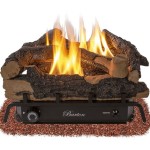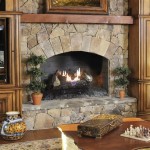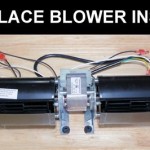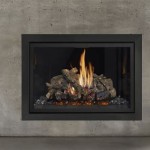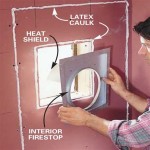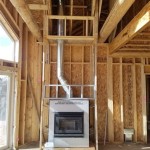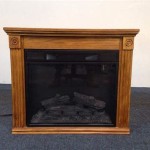Understanding Your Bis Tradition Fireplace: A Comprehensive Manual Guide
The Bis Tradition fireplace represents a significant investment in home heating and ambiance. This manual serves as a comprehensive guide to ensuring the safe, efficient, and prolonged operation of the appliance. It details essential aspects from installation and initial setup to regular maintenance and troubleshooting. Adherence to these guidelines is crucial for maintaining the fireplace's performance and maximizing its lifespan.
This documentation does not replace professional consultation. Qualified technicians should perform installation and, in many cases, more complex repairs. This manual is intended to provide homeowners with the necessary understanding to operate the fireplace safely and effectively, as well as to identify potential issues that may require professional attention.
Safe Installation and Initial Setup
The installation of a Bis Tradition fireplace is a complex process that must adhere strictly to local building codes and manufacturer specifications. Failure to comply with these regulations can result in hazardous conditions, including fire, carbon monoxide poisoning, and structural damage. Consequently, a certified and experienced installer is highly recommended for this task.
Prior to installation, thoroughly inspect the fireplace and all accompanying components for any signs of damage incurred during shipping or handling. Report any discrepancies or damages to the dealer or manufacturer immediately. Verify that the model number and specifications align with the intended installation location and requirements.
The installation process involves several critical steps, including: site preparation, flue and venting installation, clearance verification, gas line connections (if applicable), and electrical wiring (if applicable). Each step must be executed with meticulous precision to ensure the integrity and safety of the installation. Refer to the detailed installation instructions provided by Bis for specific guidelines and diagrams.
Proper ventilation is paramount. The flue system must be correctly sized and installed to effectively exhaust combustion gases. Ensure that all flue connections are secure and airtight. Inspect the flue system regularly for any signs of damage, corrosion, or blockage. If the fireplace is gas-fueled, a qualified technician must connect and test the gas line to ensure proper pressure and leak-free operation.
Following installation, conduct a thorough initial burn-in process. This involves gradually increasing the fire intensity over several hours to allow the fireplace components to properly cure and adjust. Monitor the fireplace during the burn-in process for any unusual noises, smells, or signs of overheating. Consult the installation manual for specific burn-in procedures recommended by Bis.
Operating Your Bis Tradition Fireplace Efficiently
Understanding the operational features of the Bis Tradition fireplace is essential for achieving optimal heating efficiency and maintaining a safe environment. Familiarize yourself with the controls, safety features, and recommended operating procedures outlined in the user manual.
For wood-burning fireplaces, use only seasoned, dry wood. Wet or unseasoned wood produces excessive smoke and creosote buildup, which can increase the risk of chimney fires. The type of wood used also affects the fireplace's performance. Hardwoods, such as oak and maple, generally provide more heat and burn longer than softwoods, such as pine and fir. Store wood in a dry, well-ventilated area to prevent moisture absorption.
When starting a fire, use appropriate kindling and fire starters. Avoid using flammable liquids, such as gasoline or kerosene, as they can cause dangerous explosions. Build the fire gradually, starting with a small amount of kindling and gradually adding larger pieces of wood as the fire establishes itself.
Regulate the air intake to control the fire's intensity and burning rate. Open the air intake to increase the fire's intensity and close it down to reduce the burning rate. Avoid completely closing the air intake, as this can lead to incomplete combustion and the production of carbon monoxide. Regularly remove ashes from the firebox to maintain optimal burning conditions. Allow ashes to cool completely before disposing of them in a metal container with a tight-fitting lid.
For gas-fueled fireplaces, understand the ignition sequence and control settings. Ensure that the gas supply is turned on and that the pilot light is lit (if applicable). Adjust the flame height to achieve the desired heating level. Never leave a gas fireplace unattended while it is operating. Periodically inspect the burner and pilot light for any signs of debris or blockage.
Carbon monoxide detectors are essential safety devices that should be installed in every home with a fireplace. Test the detectors regularly to ensure they are functioning properly. If the carbon monoxide detector alarms, immediately evacuate the building and contact emergency services.
Routine Maintenance and Troubleshooting
Regular maintenance is crucial for maintaining the Bis Tradition fireplace's performance and extending its lifespan. Neglecting maintenance can lead to decreased efficiency, increased risk of malfunction, and potential safety hazards. Establish a routine maintenance schedule and adhere to it consistently.
For wood-burning fireplaces, the chimney should be inspected and cleaned annually by a qualified chimney sweep. Creosote buildup in the chimney is a major fire hazard. The chimney sweep will remove creosote deposits and inspect the chimney for any signs of damage or deterioration. The firebox should also be cleaned regularly to remove ash and soot buildup. Inspect the firebrick or refractory panels for any cracks or damage. Replace damaged firebrick or refractory panels promptly to prevent further damage to the fireplace.
For gas-fueled fireplaces, the burner and pilot light should be inspected and cleaned annually by a qualified technician. The technician will remove any debris or blockage that may be affecting the fireplace's performance. The gas line connections should also be inspected for leaks. Use a soapy water solution to check for leaks around the gas line connections. If a gas leak is detected, immediately shut off the gas supply and contact a qualified technician.
Periodically inspect the glass door (if applicable) for cracks or damage. Clean the glass door with a non-abrasive cleaner specifically designed for fireplace glass. Avoid using harsh chemicals or abrasive cleaners, as they can damage the glass. Examine the seals around the glass door for any signs of wear or deterioration. Replace worn or damaged seals to maintain an airtight seal.
If the fireplace is not operating properly, consult the troubleshooting section of the user manual for potential solutions. Common problems include: difficulty starting a fire, excessive smoke, poor heat output, and unusual noises. If the troubleshooting guide does not provide a solution, contact a qualified technician for assistance. Do not attempt to repair the fireplace yourself unless you are a qualified technician. Improper repairs can result in further damage and potential safety hazards.
Specific troubleshooting steps depend on the type of fireplace (wood or gas). For wood-burning fireplaces, check the wood moisture content, air intake settings, and chimney for obstructions. For gas-fueled fireplaces, verify the gas supply, pilot light operation, and burner cleanliness. Always prioritize safety when troubleshooting any fireplace issue.
Regularly check the condition of any surrounding mantels or combustible materials. Maintaining proper clearances around the fireplace is crucial to prevent overheating and potential fire hazards. Ensure that all combustible materials are kept at a safe distance from the fireplace according to the manufacturer's specifications.
Proper maintenance of the Bis Tradition fireplace will contribute significantly to its longevity, efficiency, and safety. A proactive approach to maintenance, coupled with a thorough understanding of the fireplace's operation, will ensure many years of comfortable and reliable heating.

Bis Tradition User Manual Wood Bistradition Woodheatstoves Com

Bis Ii User Manual Wood Bisii Woodheatstoves Com

Bis Ultima User Manual Wood Bisultima Woodheatstoves Com

Bis Tradition Montecito Estate Replacement Firebrick Front Right Refractory Pr Sr2419

Bis Ultra User Manual Wood Bisultra Woodheatstoves Com

Bis Ultima Installation And Operating Instructions Manual Manualslib
Bis Tradition Installation And Operation Instructions

Bis Panorama Installation And Operating Instructions Manual Manualslib

Bis Panorama User Manual Wood Bispanorama Woodheatstoves Com

Bis Nova User Manual Wood Bisnovabk Bisnovabn Woodheatstoves Com
Related Posts

